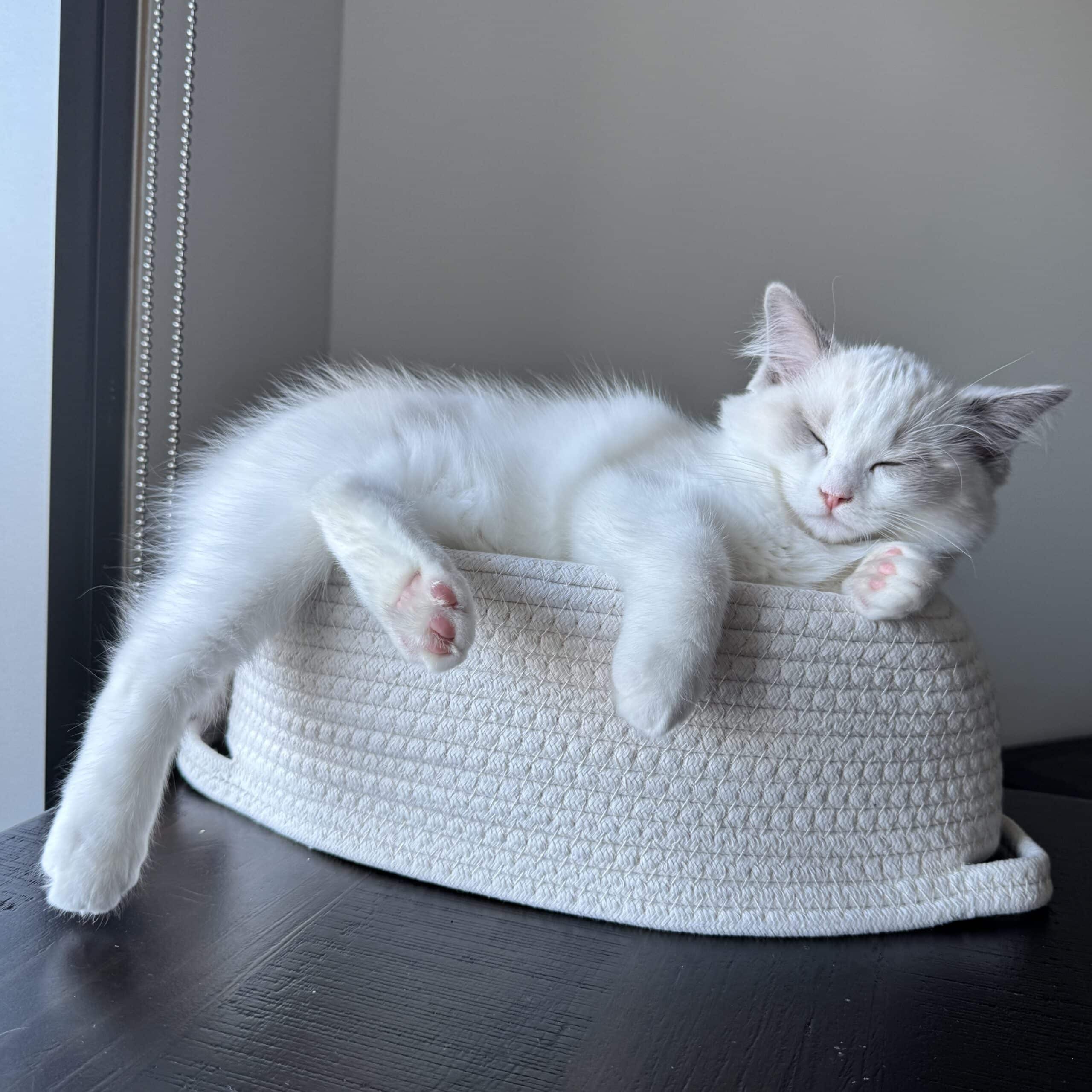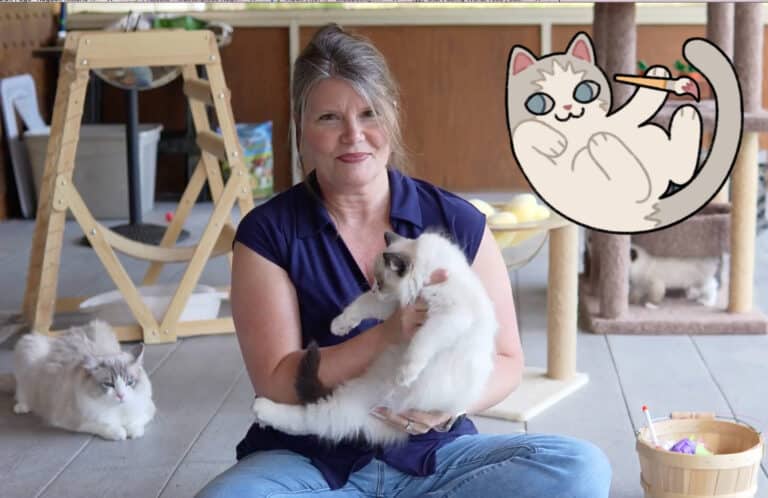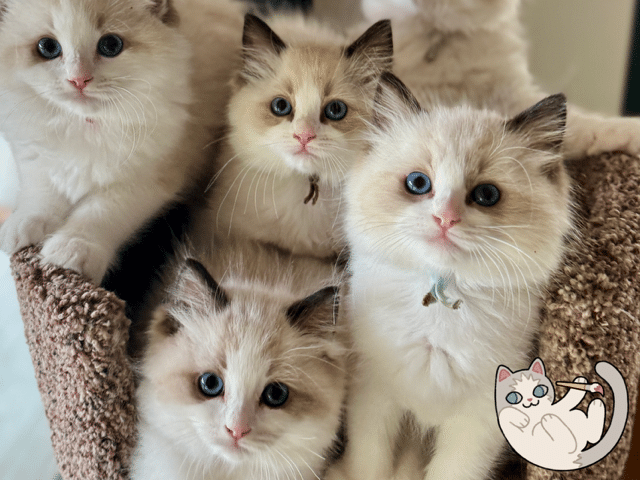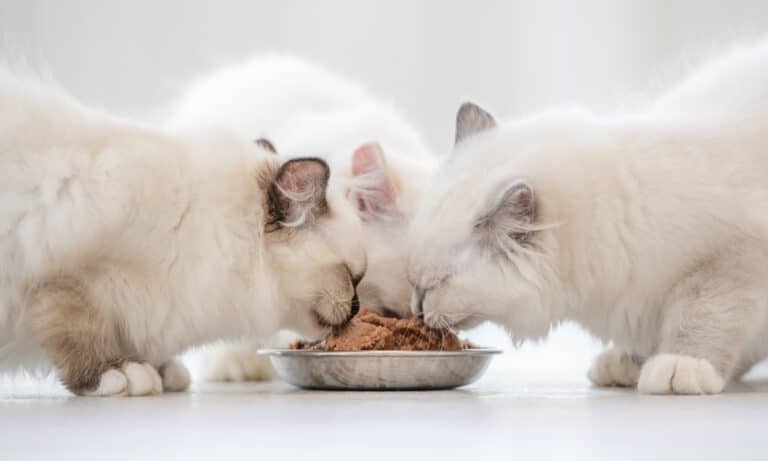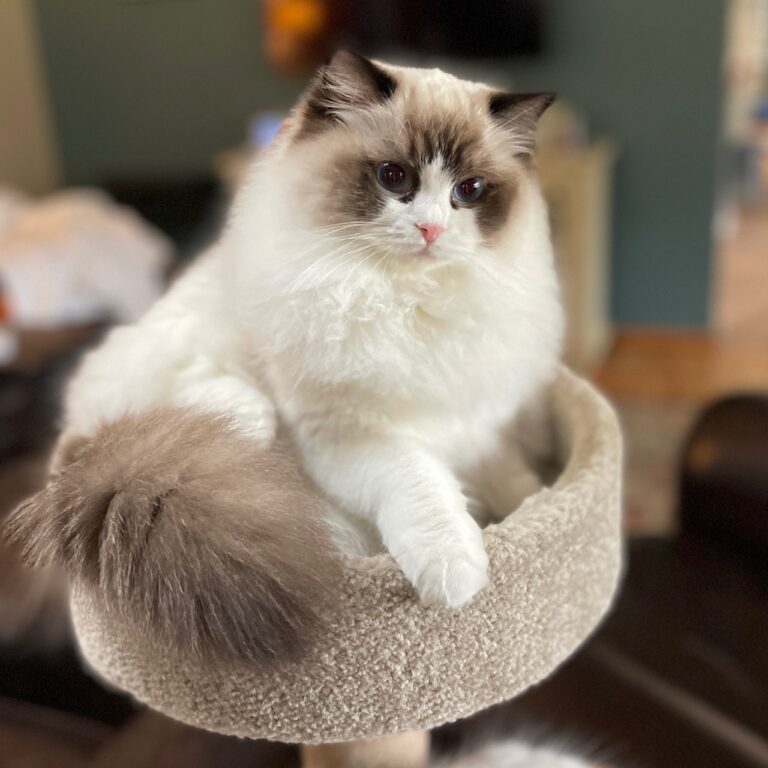Separating Myth from Fact.
Social media posts and feeds are filled with opinions on this subject. Bloggers proclaim that two Ragdoll cats are better than one, but the decision to adopt one or two Ragdolls should be based on your family dynamics and home life.
Influencing Factors.
- Where will your Ragdoll kitten live? If you lease a home or apartment, can you have more than one pet?
- Is the size of your space large enough to accommodate two Ragdolls?
- Is the two-kitten route in your budget? The budget should allow for both the initial cost of the kitten and the long-term care.
- Consider the number of pets already occupying your space: cats are generally territorial – yes, even Ragdolls.
Adopt One or Two Ragdolls? The answer might surprise you!
Many breeders will not allow their kittens to be adopted except in bonded pairs because they fear their kittens will be lonely. This is not altogether wrong, but we take exception to the notion that a kitten can’t be happy without its sibling.
Just like an only child, an only kitten can find friendship in a variety of ways: other household pets and humans can be a good source of companionship.
If adopting one kitten, be prepared to adjust your lifestyle accordingly. He will need you to play with him frequently. If you have older children, a young-ish cat, or an energetic dog, then it’s doubtful your new kitten will ever be bored.
If you adopt a playmate at the same time, you can expect them to play with each other more than they will with you! This can be pretty entertaining. But some consider it a con because the bonded pair is less interested in their human and more interested in their sibling.
The decision all comes down to what is most important to you!
Reasons to adopt two Ragdolls.
- One kitten can grow bored and might make mischief. If there are two kittens, they’re less likely to look for something to do. The perceptions of cats being trouble-makers is usually tied to curiosity. Note: As Ragdolls age, they are too lazy to wreak havoc.
- Co-learning. When one kitten watches the other, she tends to pick up on the lessons of the day. They teach each other things that we humans cannot.
- Natural play-aggression can take place between the two kittens instead of between the kitten & owner. Kittens will play-bite and nip at each other. When it becomes too aggressive, the offended kitten will let the biter know. This lesson is better learned between two kittens than between a kitten & human.
- Anecdotal evidence suggests that when there are two, they live longer, healthier lives.
- If, at a later date, they are introduced to other cats, the transition is undoubtedly easier.
The Way Forward to Adopting Only One Kitten:
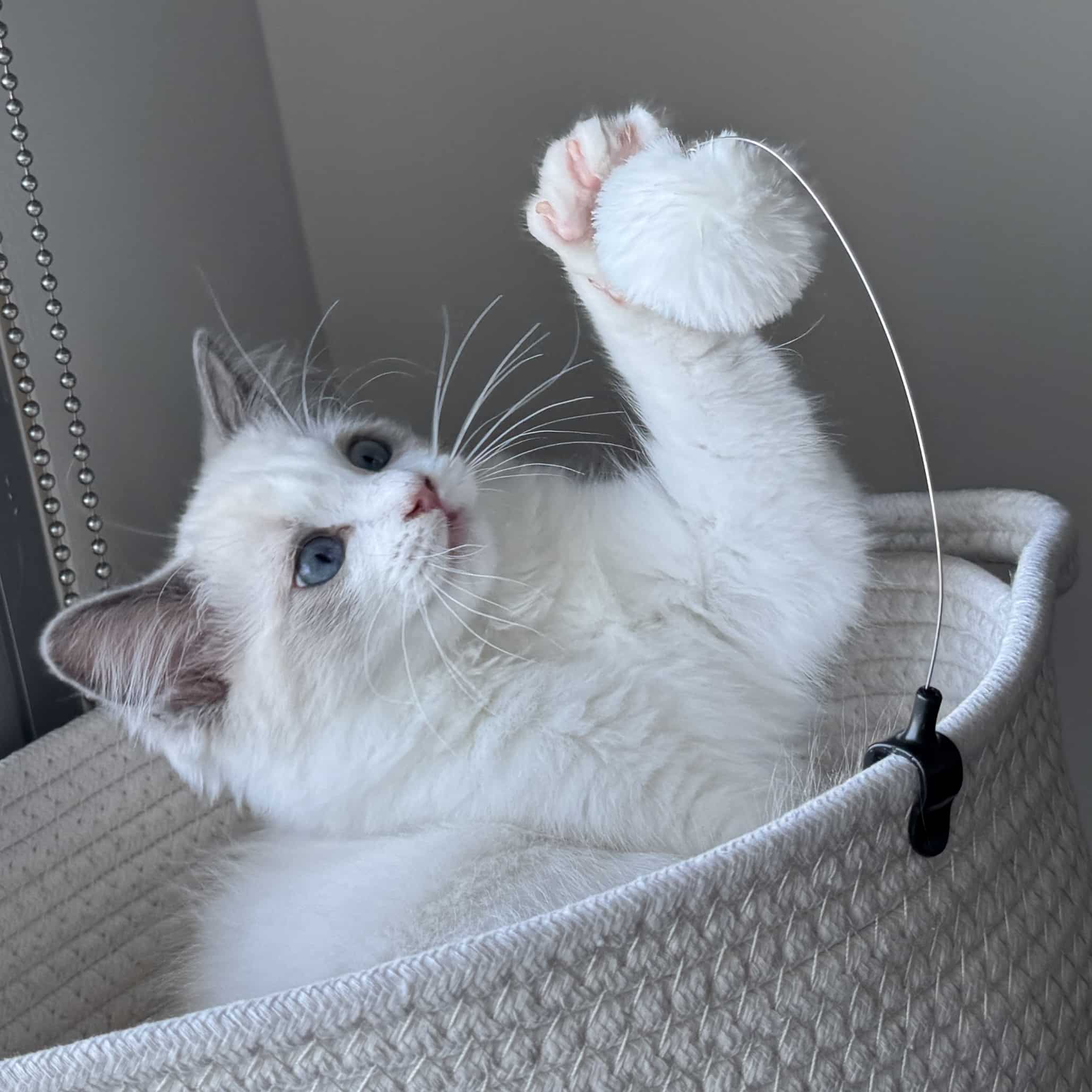
One way to go about adopting a single kitten is to consider the particular personality of the kitten. Some of our Masterpiece Ragdoll pedigrees are filled with needy, co-dependent cats, so the resulting kittens will not do so as well in a quiet home with no other pets or young kids. Your breeder should be able to tell you if this is the case and guide you to another more confident or independent kitten.
Some cats, particularly females, are straight-up divas. They grow into rather queen-like cats and prefer the attention of their human over the harassment of a sibling. These personality types will thrive in a quiet environment, even if family members need to be away from home for hours at a time.
Mrs. Bennett, for example, is perfectly content to be unbothered most of the day, where she sleeps and stares out the window for long periods. She will happily sit in our lap, and from what we hear from other adopters, her kittens grow up to behave similarly.
Q & A with Hannah, Adopter of Only One Ragdoll Kitten
She, her husband, and her only daughter adopted one Ragdoll kitten from Mrs. Bennett. They named her Marie. Marie generally struck me as a flexible Ragdoll kitten: her temperament as a small kitten was mild. She was neither rambunctious nor skittish. She did not hide, but she wasn’t the first to meet and greet us when we entered the room. She was pleasant and calm.
Catching up with Hannah has confirmed my earliest conclusions about Marie!
Q: What is your Ragdoll’s temperament like? Describe their nature, general preferences, and behaviors.
A: Marie is a very calm cat. She loves to be held and cuddled just as much as she loves to do her own thing. She is a confident Ragdoll.
Q: Did you do anything special to help her adjust to life as an only pet?
A: In the beginning, we kept her in one room until she warmed up to the new home. We gradually left her alone. It started with an hour or two, then four, and eventually eight. By this time, we allowed her access to the entire house and opened the blinds for her. She loves to sit in the window and watch the world go by. We also left the interactive toys and scratchers out for her. While we are away, we can see and talk to her on the baby cam. She responds favorably to this.
Q: How much time do you spend away from your kitten per week?
A: We spend about 35-40 hours away weekly. We typically work from 7:30 to 4:00, so she is alone during our work hours.
Q: Does your Ragdoll have any outdoor activities or excursions?
A: She loves to sit on the back patio with us, and she loves to be held while walking around.
Q: How do you ensure your Ragdoll is happy & well-socialized?
A: We entertain regularly. She is shy at first, but warms up quickly because she loves to be petted and cuddled.
Q: Does your kitten/cat seem lonely?
Q: I wouldn’t say she seems lonely, since we give her plenty of attention when we are home. We love our cat and work hard to give her all the attention and cuddles we can. Overall, having only one Ragdoll has been a success, and anybody can do it as long as they prioritize spending quality time with their kitten.
Tips for Adopting an Only Ragdoll Kitten

All in all, the Ragdoll temperament ranges from needy and clingy to confident and cuddly. They are called the puppy-cat for a good reason, so it’s essential to consider their social needs.
If you’re planning to adopt just one kitten and you work from home or are retired, do not feel pressured to adopt two kittens. If you have to work away from home, below are suggestions to help you transition your kitten from a busy household litter to a one-pet household.
- Take time off from work.
Be available for your kitten the first week. By the end of the week, you’ll understand his habits and can start leaving him for a few hours at a time, allowing him to learn self-soothing. - Gradually orient your Ragdoll to being alone by leaving him for 2-8 hours over a period of days, i.e., 2 hrs, 4 hrs, 6 hrs, etc.
- Consider installing a baby monitor in the main areas, allowing you to talk to your cat while you’re away. Some cameras have reciprocal viewing, allowing them to see you as well as hear.
- Set aside places just for him. This means closing off rooms so he doesn’t grow used to being in them during the day while you’re gone. A smaller space will feel less intimidating. If you have 2000 square feet, consider reducing it to 1000 for your kitten when you’re gone.
- Leave a radio on for noise. Or play fun cat videos on YouTube on a TV where your kitten will be.
- When you come home, prepare to spend time with your Ragdoll. She will grow adjusted to this routine so well that you’ll notice the trend continue on the weekends to some degree.
- Consider a stroller for outdoor excursions when you’re off from work.
- Consider adopting a mate from a shelter. Watch for specialty pet rescues for a pet who might ease nicely into your home (be sure they are fully vaccinated & introduce slowly). Or reach out to reputable breeders to adopt an adult Ragdoll cat.
- Ask your breeder for advice on the right temperament for the best results if you cannot adopt a second kitty.
- Be sure to learn your Ragdoll’s behavior. If you know your cat’s everyday habits, you can spot any signs of illness or depression. If you believe you’ve got a lonely kitty, you will want to consider adding a new family member!
Trying to decide between a girl or a boy Ragdoll kitten? We’ve got advice for that, too!
